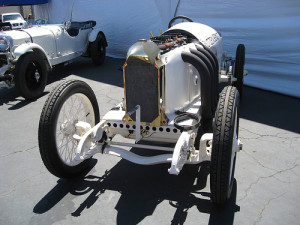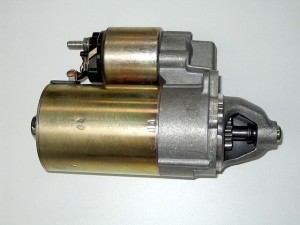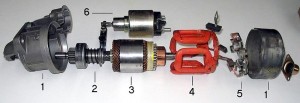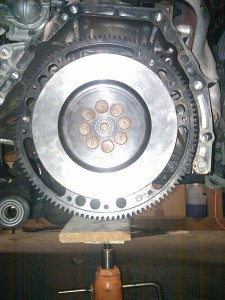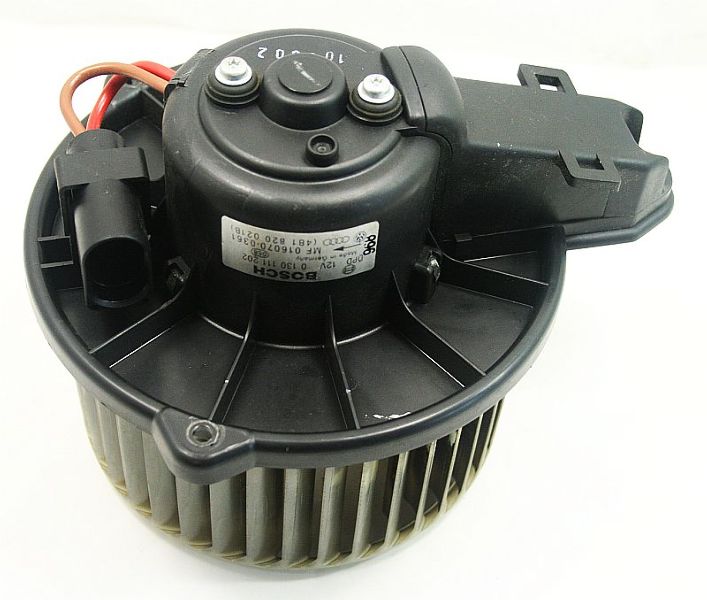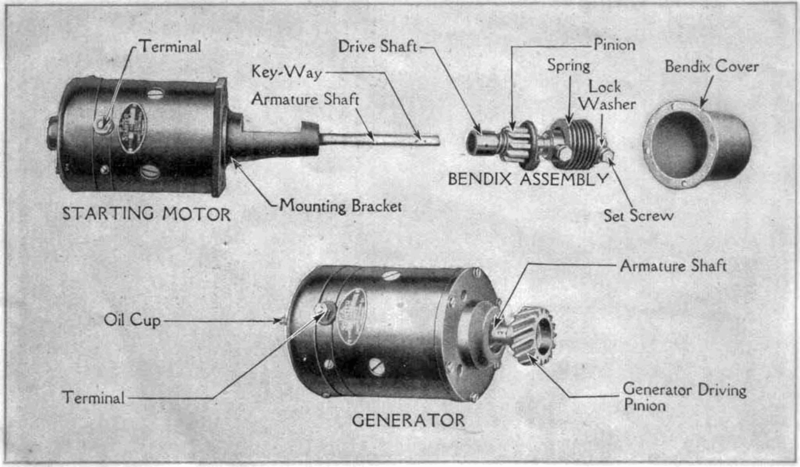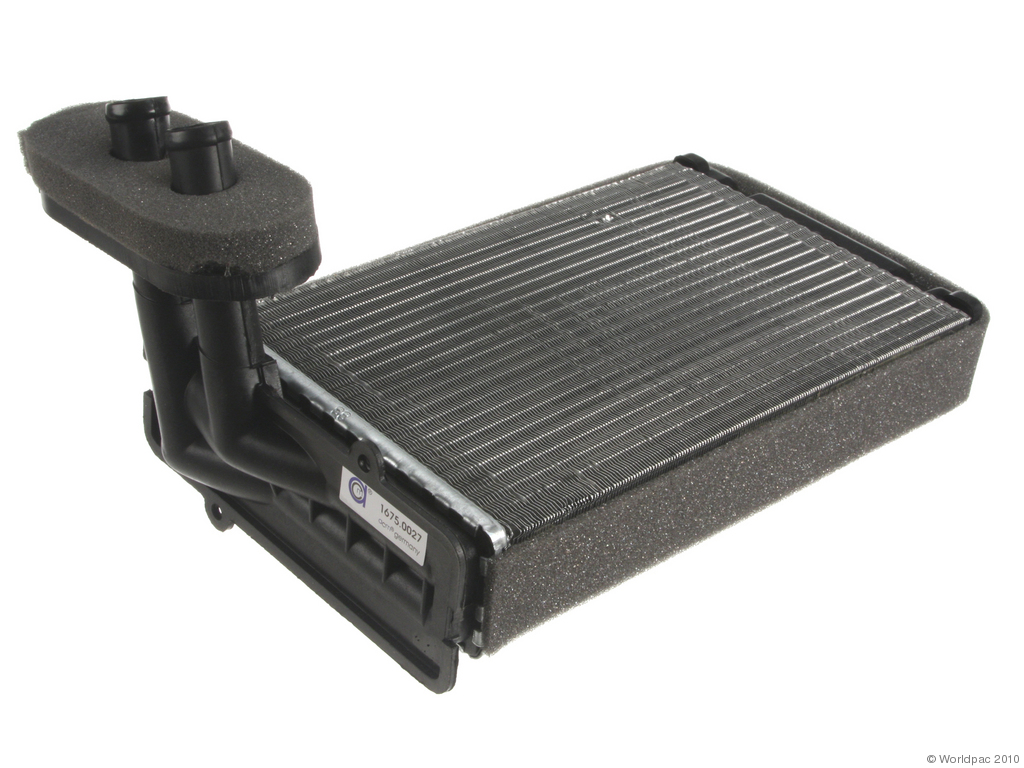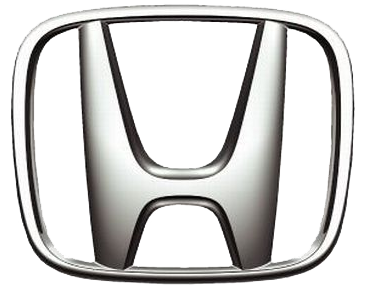What is a Starter Motor?
A starter motor is a device that is capable of turning over an internal combustion engine until the process of combustion takes over. This is typically accomplished by providing the necessary mechanical energy to rotate the crankshaft for a given number of cycles. While the starter motor is rotating the crankshaft, the engine begins the process of combustion. The starter is then able to disengage once the engine is running under its own power. Most automotive starter motors are electric, but some applications use pneumatic or hydraulic power.
Contents
History of the Starter Motor
In the early days of the horseless carriage, automakers utilized a whole range of different engine starting methods. These first engines were relatively simple. They often had only one or two cylinders, didn’t have electrical systems, and didn’t even compress their fuel mixtures. So while the thought of starting your car the same way you start your lawnmower might sounds incredibly strange today, it was an entirely different matter at the turn of the 20th century.
A lot of early “starter motors” were human powered, in that the initial movement of the crankshaft was literally provided by a human-operated crank. The driver would insert a crank handle into the front of the engine, turn it, and then remove it as soon as the engine engaged.
Other early engine starting techniques used everything from gunpowder to springs with varying degrees of success and failure.
Although the idea of electric starter motors was around prior to the turn of the 20th century, the first production vehicle to have one was the 1912 Cadillac. In addition to starting the engine, this early electric starter also doubled as a generator, which also made the 1912 Cadillac the first production vehicle with all of the parts in place to constitute what we would consider a recognizable electrical system.
Hand cranks were standard equipment on most cars through the 1920s, but the idea of self-starters (and electrical systems) caught on soon enough. Most of these starters used the Bendix drive starter, which remained popular until the 1960s. Unlike Cadillac’s starter/generator units, the Bendix drive was designed to automatically disengage after the engine is running on its own power.
Also see: History of the Starter Motor
How Do Starter Motors Work?
Internal combustion engines are typically incapable of “self starting,” which means they require some external force to start running. This is typically accomplished by using some method to turn the crankshaft until the process of combustion can take over. The single most common example is an electric starter motor that engages with a toothed flywheel or flex plate.
In gasoline engine applications that use an electric starter, the operation of the starter motor is relatively simple. When the ignition is activated (either via a key or a button), power is delivered to an electric starter motor. That causes the a small gear to extend and mesh with the teeth of a ring gear that is fixed to either a flywheel or flex plate. This flywheel or flex plate is bolted to the crankshaft of the engine, which allows the starter motor to turn the engine over.
Once the engine is turning over, the process of internal combustion begins. Fuel and air are injected into the engine, and they are ignited by spark plugs. That allows the engine to start rotating under its own power, which causes it to start rotating faster.
Electric Starter Motor Components
There are a few different kinds of electric starter motors, but they typically include these basic components:
- Housing
- Overrunning clutch (Bendix drive in older starters)
- Armature
- Coils
- Brushes
- Solenoid
Pneumatic and Hydraulic Starters
Some diesel applications use pneumatic or hydraulic starter motors. These starters operate the same way that electric starter motors do, but they are powered by either compressed air or hydraulic pressure. Unlike electric starters, these starter motors don’t require a battery to operate. Pneumatic starters are operated by stored compressed air from a tank that is charged when the engine is running, and hydraulic starters can sometimes be manually charged.
Starter Motor Failure
When your starter motor fails, it becomes impossible to start your engine. However, there are a lot of other problems that can result in a no-start situation. If the engine cranks slowly, it could be be a starter motor that is drawing too much amperage, but it could also be a bad battery or even wiring. Other common starter motor problems are related to the solenoid, which can be either built into the starter or located remotely, and the starter motor relay. In any case, the diagnostic procedure typically involves checking to see if the solenoid and relay are receiving power and whether they are operating properly.
Starter motors can also fail mechanically, which typically results in the Bendix drive or sprague clutch system failing to engage. In that case, a rebuild or replacement is typically the only solution. Of course, a starter motor can also fail to operate properly if the teeth on the drive gear or the ring gear are damaged. This type of damage can be the result of attempting to start an engine that is already running, a starter motor that doesn’t retract its gear properly, or a handful of other issues. In cases where a starter motor fails to work due to broken or missing teeth on the ring gear, the engine or transmission typically has to be removed in order to replace the flywheel or flex plate.

